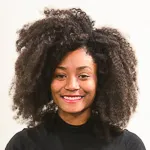The Black Student Union hosted a series of events centered around Black Women during this year’s Women’s History Month celebration. Award-winning poet Alysia Harris was the artist in residence. She held a workshop, led a discussion and performed a poetry show in honor of the event.
An Intellectual Roundtable was held in co-sponsorship with the Black Community Services Center about the issue of colorism in the black community. The capstone event was colloquium-style and called “Black Women in Academia,” which featured some of the nation’s brilliant women of color. After this series of rich, well-executed events, the Black Student Union’s Women’s History Month Committee closed the series with a photo shoot titled “Different Shades of Beauty.”
Although lackadaisically advertised only a couple of days before its occurrence, the photo shoot had the greatest attendance by women of color of all the events. Held the Sunday before finals from 12pm to 2pm, the turnout was almost triple of that of the Black Women in Academia event held the week before at the exact same time. Black Women in Academia had co-sponsorship from over ten campus organizations and was aggressively publicized to draw crowds to the brilliant lineup of scholars sacrificing their Sunday afternoon to enrich students. The Black Student Union (BSU) has over 80 members, but even its members’ attendance was so low that the BSU could not fill up one full row.
But vanity will always trump substance, so one should not be surprised that the photoshoot had a greater turnout.
When planning events at Stanford, one can always guess which events will be widely attended and which events will not. Events centered around marginalized identities, uncomfortable issues or causes that one can tune out while on Stanford’s manicured campus will be sparsely attended. If there is a big celebrity name or attendance is required there will be a large audience. And if there is some kind of drama, an enticing food option, the event will allow its attendees to be self-congratulatory for their presence or the event will result in Instagram-worthy pictures, then there will most definitely be a large gathering.
Stanford over-programs for a student body that will not show up.
Week after week there are events to go to every night. Flyers are put up. Emails are blasted with catchy or provocative headlines. Money rains down from student budgets and co-sponsorships. Events come, events go. Do not worry if you do not attend because there will always be another event tomorrow night or the day after to serve as penance for your absence.
Students are inundated by so many events that they start to lose value. It doesn’t matter what the great cause is–unless there is the possibility of a new profile picture with a well-know person, count on the same people who always come to the events to be there. They belong to the community and are always supportive.
The over-programming followed by disappointing audience sizes is yet another indicator of Stanford’s privilege. The events with substance that have maybe ten people in the room with a lecturer whose honorarium will not break the bank could be the place for generative learning and nuance. There will be no drama, no getting there early to snag good seats and one can ask the question about white privilege, intersectionality, black feminism and activism that one could not ask in a room full of people.
But that isn’t sexy enough.
Events need to be geared to include an audience that reaches outside the Stanford community. Outreach to the Stanford student body is always a hit or a miss, and many times the hard work and care that goes into the event is not digested by the student body. The desire to educate those who have so many resources at their fingertips is sometimes unhealthy. There are communities right next door that can supplement our events and teach us a great deal. (I apologize if this model is being done; there are so many events happening, it probably got lost somewhere in my email.) Additionally, there are many talented organizations in the Bay with fantastic networks that Stanford students can tap into for event publicizing. This method of outreach will be transformative and give the students who actually show up the opportunity to pop this imaginary Stanford bubble.
Contact Mysia Anderson at mysia ‘at’ stanford.edu.
